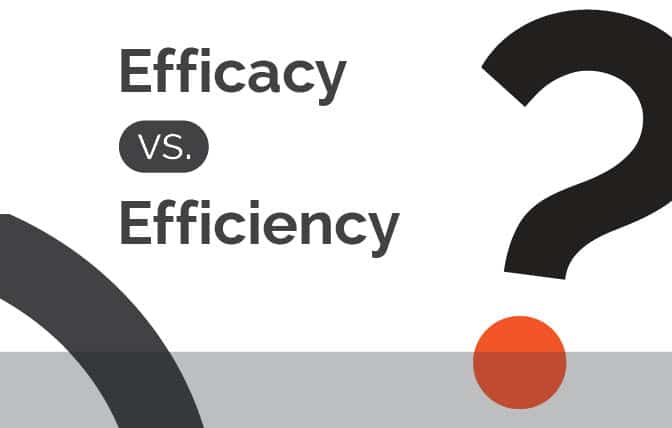Latest News
Efficacy vs. Efficiency

What is Efficacy?
Luminous efficacy is a measure of how well a light source produces visible light. It is the ratio of luminous flux to power, measured in lumens per watt (lm/w) in the International System of Units (SI).
What is Efficiency?
Efficiency refers to the amount of light output from a LED light source in relation to the amount of electrical power it consumes. It is usually expressed as a ratio or percentage and measures how much light is produced per watt of electricity used. The higher the efficiency, the more energy-efficient the LED light is and the less heat it generates.

LED Efficacy vs. LED Efficiency
LED efficacy and LED efficiency are two important factors to consider when choosing LED lighting. Efficacy refers to the amount of light that an LED produces per unit of power, while efficiency refers to the percentage of power that an LED converts into the light.
LEDs are known for their high efficacy compared to other types of lighting, such as incandescent or fluorescent bulbs. This means that they produce a lot of light using very little power. For example, an LED light with an efficacy of 100 lumens per watt (lm/W) will produce 100 lumens of light using only 1 watt of power.
The efficiency of an LED, on the other hand, refers to the percentage of power that is converted into light. For example, an LED with an efficiency of 80% will convert 80% of the power it uses into light, while the remaining 20% is lost as heat.
One of the benefits of LEDs is that they are highly efficient, with efficiencies of up to 95%. This means that they convert most of the power they use into light, making them an energy-efficient option for lighting.
However, efficacy and efficiency are not the only factors to consider when choosing LED lighting. Other factors, such as the colour temperature and colour rendering index of the LED, can also affect the quality of the light produced.
Overall, LED lighting offers a combination of high efficacy and high efficiency, making it a popular choice for energy-efficient lighting. By choosing LED lights, you can reduce your energy consumption and save money on your energy bills, while also enjoying high-quality lighting.
Why is Efficacy important?
The luminous efficacy of lighting devices is important in terms of energy efficiency and electricity consumption, since luminaires with low efficacy will require more electrical power to produce the luminous flux required for illumination. Although the lost energy is converted to heat, and that heat may contribute to the required room heating.
A light engine with a high efficacy will be able to produce more lumens per watt of energy used. This means that light engines with a higher efficacy are more efficient and are cheaper to run than a light engine with a lower efficacy with the same lumen output. Therefore, efficacy can be very important with luminaires that are run for long periods of time (such as street lighting) or for customers who are looking to reduce their energy costs.
Mondolux High Efficacy Range
When looking for a standard LED Downlight or track light, one would typically find efficacy values between 75 to 95lm/w, our Mondolux High Efficacy range offers an efficacy of 130lm/w to 160lm/w across its downlight and track light range. This means the Mondolux HE range can offer a luminaire with high photometric value CRI>90 CQS>90 while providing you with a much more efficient and energy-saving product.


Case study:
Using the Mondolux High Efficacy range, how much greenhouse gas emissions can be saved in a retail store with 100 x Tracklights and 50 x Downlights when compared with standard products:
|
GREEN HOUSE GAS EMISSIONS AND EQUIVALENCIES SAVINGS |
|
|
Total Power Savings: |
7,031 kWh (p.a.) |
|
Carbon dioxide emissions generated from electricity usage: |
1.070 Kg CO2/KWh |
|
Green House Gas Emission Reduction: |
7523.571 Kg of carbon dioxide equivalent (tCO2e) (p.a.) |
|
The Blue Mallee Eucalyptus tree seedlings grown for 14 years: |
81 Trees / p.a |
|
Number of smartphones charged: |
606,147 Pcs |
|
Kg of coal burned: |
2787.518 kg |
Want to find out more on how you can save? Get in touch with our team to discuss your requirements.
We're a Casambi certified commissioning partner